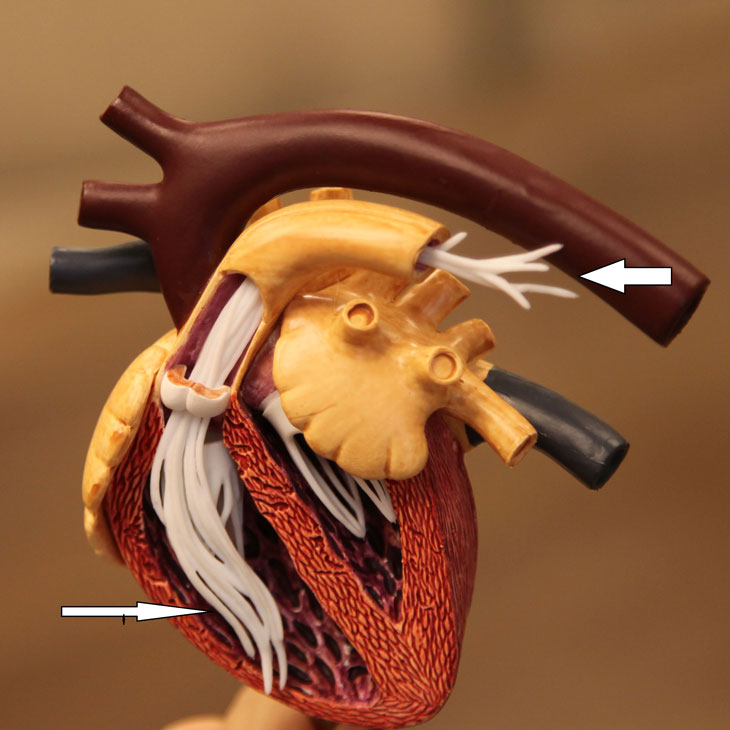Pet Blog > Addressing the Cost of Heartworm in Dogs
Addressing the Cost of Heartworm in Dogs
If you are a dog owner, you may have heard of heartworms in dogs. However, like many dog owners, you might not be completely aware of the various threats and risks that heartworms can pose to your furry companion.
Heartworm is a serious and potentially lethal parasite that mainly infects dogs and cats. The good news is that it is preventable and treatable if your pet does contract heartworms. Heartworm, known as Dirofilaria immitis, is a parasite that takes up residence in a dog's body. It mainly affects his lungs, heart, and associated blood vessels.
Although outdoor playtime for your pet definitely offers many benefits, it can also increase his risk of exposure to heartworm. The risk is higher outdoors as heartworm often spreads through bites from infected mosquitoes. And as there is no way to know if a mosquito is infected, prevention is essential.
But this doesn’t imply that your dog is completely safe indoors. Also, all dogs, regardless of sex and age, are vulnerable to heartworm infection.
Symptoms of Heartworm in Dogs
How do you know if your dog has heartworms? Unfortunately, there might be no or few signs of heartworms in dogs during the early stages. However, as the heartworms grow and multiply, several symptoms would become evident. These symptoms will increase in severity gradually as the disease advances. Symptoms of heartworm disease in dogs may include:
Coughing
Difficulty breathing
Anemia
High blood pressure
Exercise intolerance
Enlarged liver
Fainting spells
Right-sided chronic heart failure
Rapid heartbeat
Be aware of any changes in your canine's behavior. It is also essential to keep a close eye out for changes in behavior which align with the signs and symptoms of heartworm. Make a vet appointment right away if you find that your furry friend is displaying symptoms of heartworm.
Heartworm Diagnosis
It often takes many years before dogs show signs of heartworm infection. Because of the slowly developing symptoms, heartworm disease is diagnosed primarily in 2 to 8-year-old dogs. The earlier your vet detects heartworm, the brighter the chances for recovery. And in a majority of cases, a blood test will determine the presence, or lack thereof, of the parasite.
Your vet will test the blood for the presence of antigens even in case there isn’t any evidence of microfilariae. As there are few early signs of the disease, detecting their presence timely through a heartworm test administered by a vet is crucial. In case your pet is diagnosed with heartworm via a blood test, the vet will use a few additional tests for confirmation. These tests will also make sure that your dog can safely undergo treatment and recover as soon as possible.
Heartworm Treatment
Medications
It is vital to work throughout the year to prevent heartworms. Your vet may prescribe a preventative monthly oral flea, tick, and heartworm prevention pill like Trifexis, Heartgard Plus, or Sentinel for Dogs or possibly a topical agent like Coraxis. Once infected, heartworm treatment plans typically require several medications, including many injections to kill the heartworms. You may have to administer prednisone and doxycycline orally to lower the risks of unwanted side effects. Adult heartworms are treated with melarsomine dihydrochloride. This medication is administered by intramuscular injection, deep into the epaxial muscles. You may also need to add a heartworm preventative for killing the juvenile heartworms and preventing further infection. Your vet will also prescribe antibiotics as a bacterium is present in the heartworms.
Administering corticosteroids at the same time as a heartworm preventive and the antibiotics also help in reducing inflammation.
Restrict Activity and Exercise
Exercise and activity restriction are a crucial element of successful treatment for heartworms in most dogs. It’s required during, before, and after heartworm treatment for a specified period. As exertion is likely to increase the risk of damage to the lungs and heart, crate confinement might be necessary.
How long after heartworm treatment can dog be active?
According to the American Heartworm Society, minimizing physical activity, restricting exercise, and ensuring dogs are safely confined when unsupervised are important components of minimizing complications from heartworm treatment. To ensure success during recovery, steps should be taken to provide safe physical and mental stimulation and to meet dogs’ needs for social interaction.
Most dogs can be safely leash-walked during the treatment recovery period and providing appropriate chew toys can help relieve some of that stored up physical energy. During confinement, reading to dogs can help decrease arousal and stress and there are many simple, inexpensive ways to provide in-kennel enrichment. Taking advantage of feeding times to provide mental stimulation as well as ensuring that a variety of stimulating activities are provided can help keep the canine mind active and healthy.
Caring for Your Dog after Heartworm Treatment
Heartworms will die over the next couple of weeks with proper heartworm treatment, but a full recovery from heartworms could take up to a couple of months. Continue to monitor your pet’s recovery and response to treatments.
As heartworms die and are broken down, their pieces may lodge in other parts of your dog’s body and blood vessels, which can cause unnecessary complications. When your pet needs to go outside, make it a habit to use a leash, especially if your dog is very energetic. Keep your furry friend indoors or in his kennel most of the time.
After about six months following the drug treatment, take your dog to the veterinarian. He or she will conduct a follow-up test to find out if all worms have died.
Notify your vet in case any of the following occur:
Blood in the bowel movements or urine
Labored breathing
Refusal to eat
Frequent coughing
Average Cost of Treatment
The average cost of heartworm treatment for dogs is often around $1,000. However, it can range from $500 to $1,100 or even more depending mainly on the size of your dog, veterinary bills, and the stage of the disease. The typical treatment protocol includes x-rays and bloodwork for measuring the infection load, antibiotics for killing the parasites which live in the heartworms, Immiticide, sedatives, and pain medication.
Modern veterinary care for dogs can be quite expensive. Conventional heartworm treatment is also costly in most areas of the U.S., and you can expect high veterinarian bills if your dog has heartworm disease. Vet bills can get very expensive, so missing small things like monthly heartworm treatments is a big mistake. Make sure that you take your dog for an annual checkup at the vet each year. Keeping your pet current on shots, vaccinations, and heartworm treatments are some of the lighter expenses that pet owners face. However, this small investment helps avoid very large bills in the future.
Considering purchasing pet insurance to cover some of these expensive treatments that your pet may need throughout their life. While evaluating pet insurance, talk with your veterinarian and do some research on your options and differing, affordable pet insurance cost. Here are some things to keep in mind:
Make sure they offer an open network so you can choose a veterinarian of your choice
Most pet insurance plans are reimbursement plans, meaning you pay first then send you a check later
There are many exclusions and add on options in policies so read the fine print
Some “high risk” dog breeds are not covered
If you find yourself with a large veterinary bill and without pet insurance, pre-existing conditions are typically not covered so you will have to find another resource. Don’t be afraid to ask your vet about options they may offer, such as payment plans for vet bills or possibly getting a second opinion. If enrolled, many vets also offer CareCredit, that have special financial terms they work out with providers to provide extended-month financing options.
Consider crowdfunding to fundraise for your pet’s bills. Let’s face it, almost everyone loves pets and hate to see them suffer. More than 68% of American households have pets, so seek assistance from your fellow pet lovers. More and more dog parents are crowdfunding vet bills to help with veterinary bills. There are a few pet-dedicated crowdfunding platforms that partner directly with veterinary providers to ensure transparency.
Concluding Thoughts
Heartworm disease is expensive but also avoidable. It is crucial that you and your vet follow reasonable steps such as yearly checkups, early testing, and year-round prevention to protect your pet and avoid this costly disease.
Check out the other “Dog Blog” articles
Return to the Pet Crowdfunding Blog


